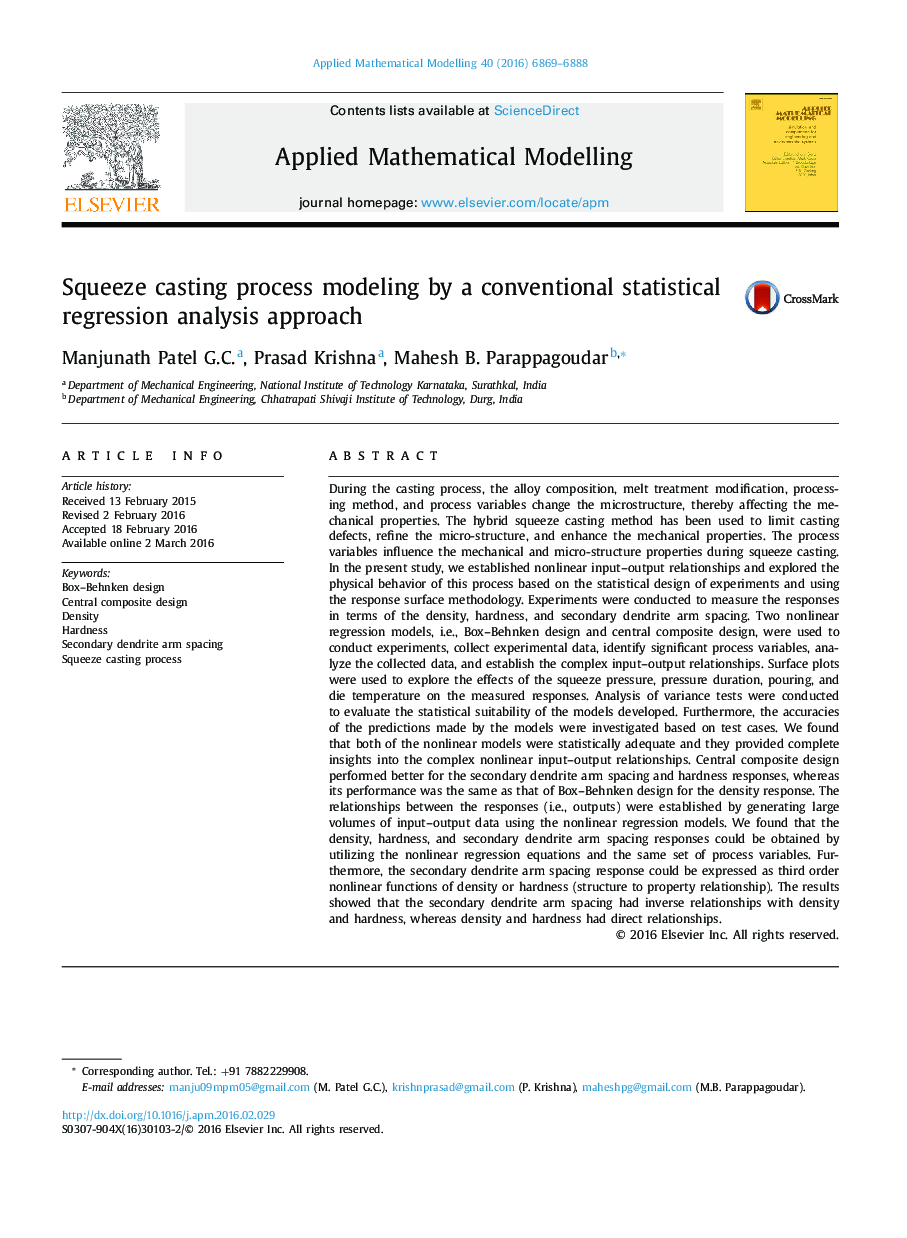| کد مقاله | کد نشریه | سال انتشار | مقاله انگلیسی | نسخه تمام متن |
|---|---|---|---|---|
| 1702802 | 1519397 | 2016 | 20 صفحه PDF | دانلود رایگان |
• Aim at experimental investigation and statistical analysis of squeeze casting process.
• The squeeze casting parameters influence on density, hardness and SDAS is studied.
• Non-linear regression equations developed predict accurately the casting properties.
• The findings and methodology are useful to metal casting industries.
• The research work helps to reduce trial experiments, cost and cycle time.
During the casting process, the alloy composition, melt treatment modification, processing method, and process variables change the microstructure, thereby affecting the mechanical properties. The hybrid squeeze casting method has been used to limit casting defects, refine the micro-structure, and enhance the mechanical properties. The process variables influence the mechanical and micro-structure properties during squeeze casting. In the present study, we established nonlinear input–output relationships and explored the physical behavior of this process based on the statistical design of experiments and using the response surface methodology. Experiments were conducted to measure the responses in terms of the density, hardness, and secondary dendrite arm spacing. Two nonlinear regression models, i.e., Box–Behnken design and central composite design, were used to conduct experiments, collect experimental data, identify significant process variables, analyze the collected data, and establish the complex input–output relationships. Surface plots were used to explore the effects of the squeeze pressure, pressure duration, pouring, and die temperature on the measured responses. Analysis of variance tests were conducted to evaluate the statistical suitability of the models developed. Furthermore, the accuracies of the predictions made by the models were investigated based on test cases. We found that both of the nonlinear models were statistically adequate and they provided complete insights into the complex nonlinear input–output relationships. Central composite design performed better for the secondary dendrite arm spacing and hardness responses, whereas its performance was the same as that of Box–Behnken design for the density response. The relationships between the responses (i.e., outputs) were established by generating large volumes of input–output data using the nonlinear regression models. We found that the density, hardness, and secondary dendrite arm spacing responses could be obtained by utilizing the nonlinear regression equations and the same set of process variables. Furthermore, the secondary dendrite arm spacing response could be expressed as third order nonlinear functions of density or hardness (structure to property relationship). The results showed that the secondary dendrite arm spacing had inverse relationships with density and hardness, whereas density and hardness had direct relationships.
Journal: Applied Mathematical Modelling - Volume 40, Issues 15–16, August 2016, Pages 6869–6888
